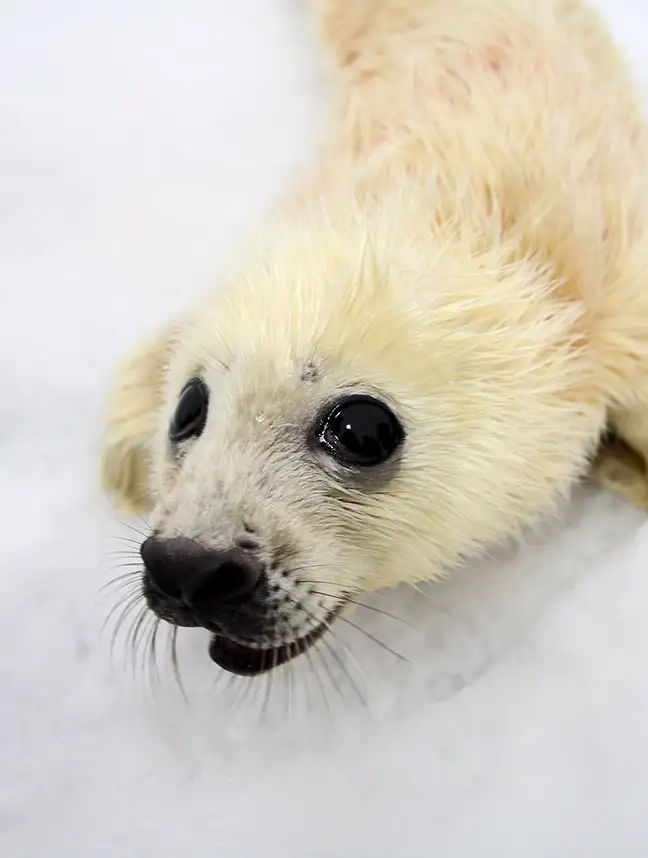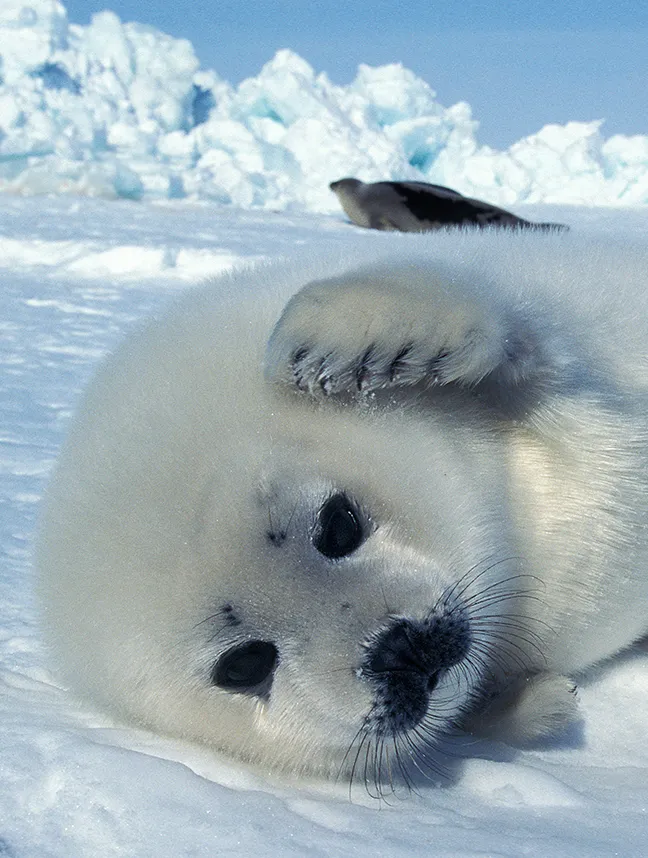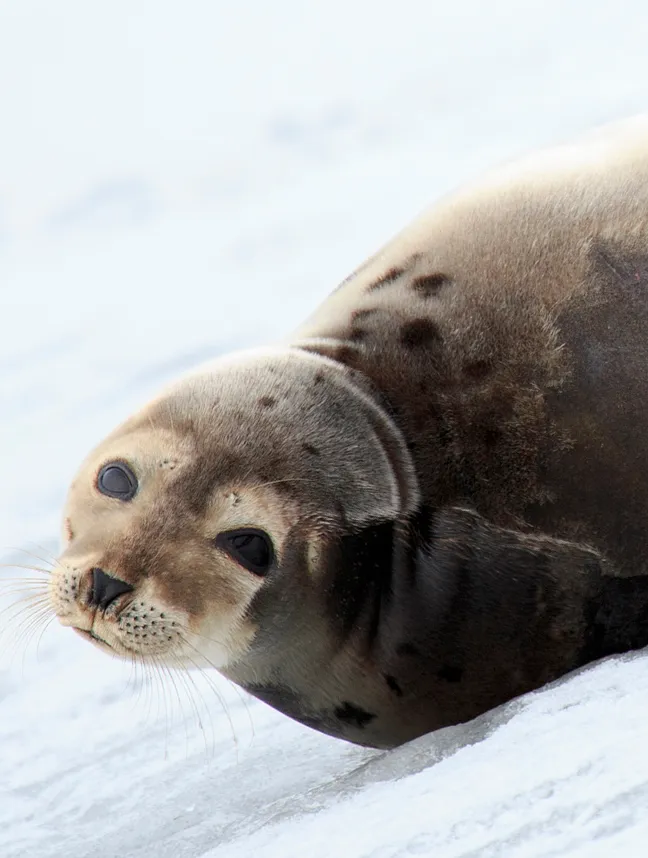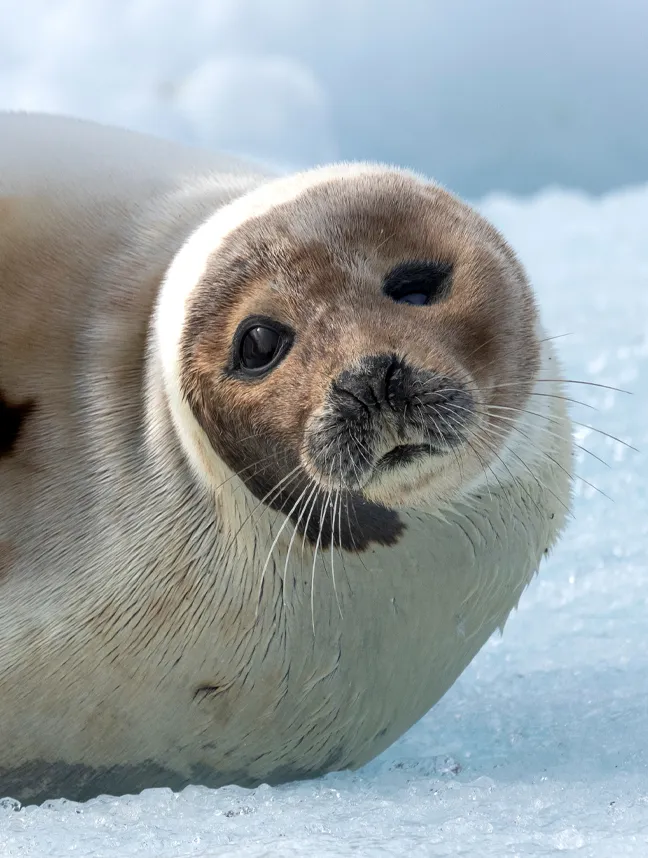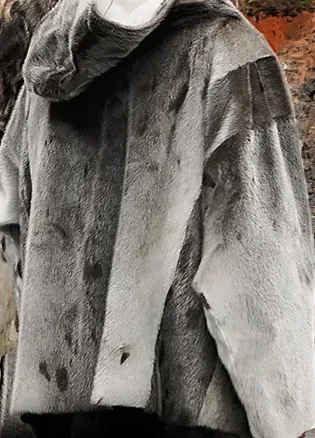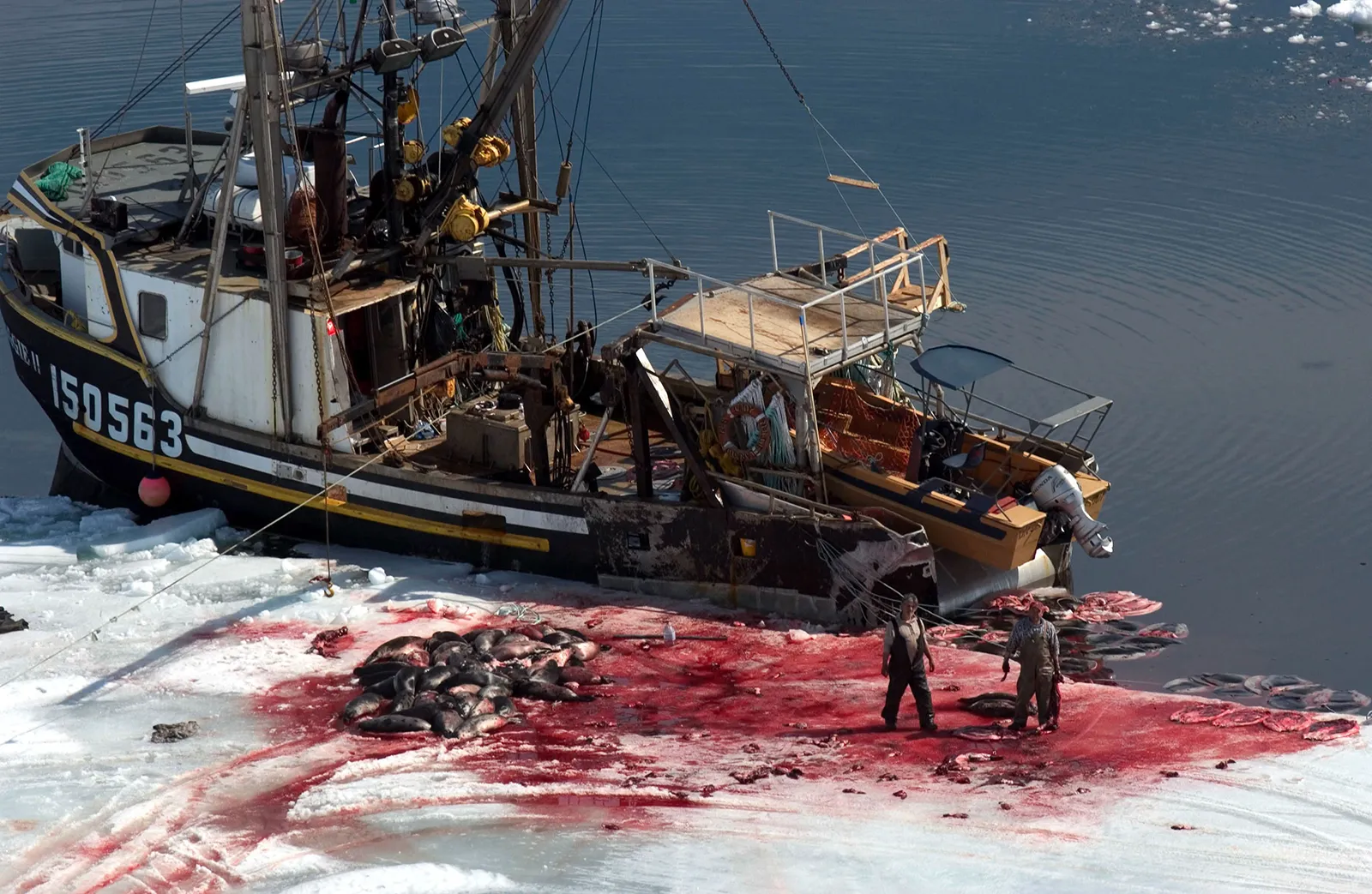About Harp Seals
Harp seal pups are famous for their big black eyes and fluffy white fur, which is why, at this stage of their lives, they are commonly referred to as whitecoats. Their images have been captured in a thousand ways and distributed around the world, making them one of the most recognizable and well known of nature's innocent and precious baby creatures. It is ironic and sad that all this recognition does nothing to help their plight as these seal pups are the victims of a brutal, politically-driven, propaganda-bolstered slaughter. In fact, these beautiful and gentle creatures suffer the largest or second largest slaughter of any marine mammal species on the planet (the other large marine mammal slaughter being the months-long daily massacre of Cape fur seal pups in Namibia).
